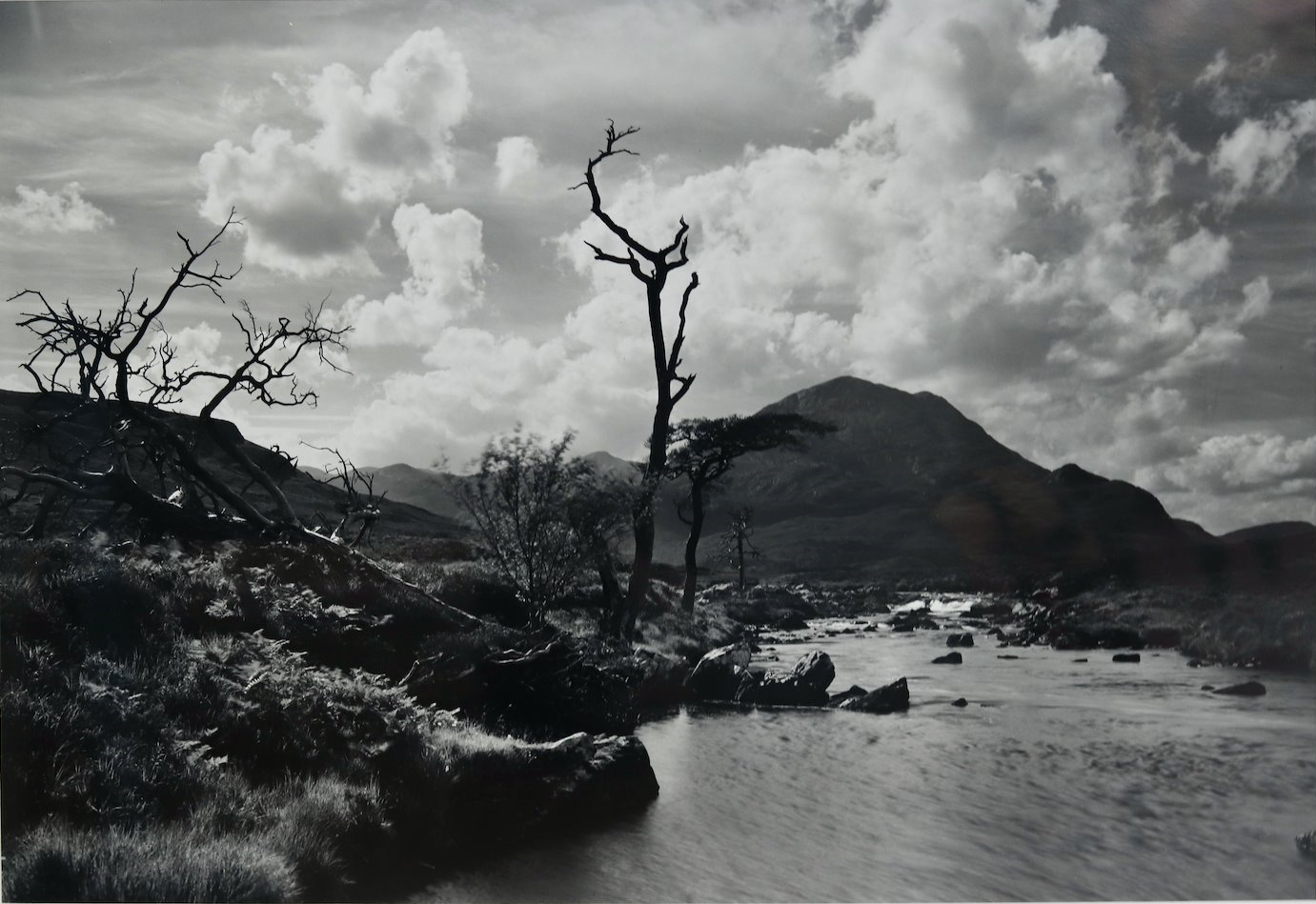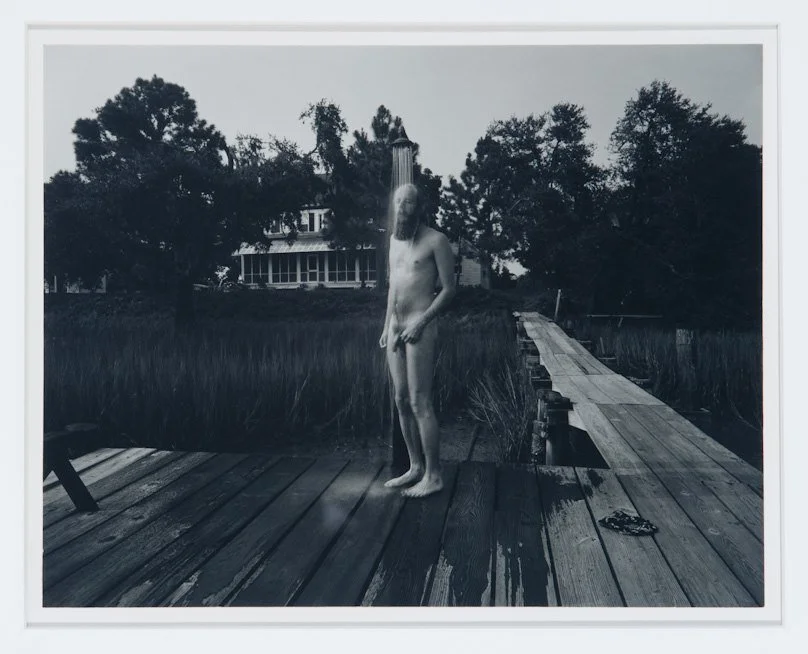
John McWilliams
CURRICULUM
A walk around the city of Decatur, Georgia provides ample opportunity to view a beautifully green and wooded landscape that nevertheless bursts with examples of the human impact on natural landscapes. Native plants and trees are jumbled amid naturalized or exotic species, whether planted intentionally or escapees from gardens years, decades, or centuries earlier. The historic Decatur Cemetery, with plots dating back to the 18th century, is a prime example: graves are dotted with native wildflowers and invasive grasses; our local magnolias, including the uncommon Big Leaf species, share spaces with introduced gingko trees; the walking trail behind the cemetery is filled with native plants and escaped garden ornamentals alongside a creek that is both a natural feature and an integrated element of the city’s stormwater drainage system. Our commercial blocks are widely separated by green patches and spaces in between parking lots feature tiny plots of fenced waste ground overgrown with stunted trees and the dreaded kudzu vine, microcosms of this phenomenon of the coexistence of the built and the natural.
In John McWilliams’ works, we observe the same phenomenon but, so to speak, with a “reversed polarity.” The rich dark tones of the black and white photographs show places dominated by flora, with the built human elements peaking through amid the plant life and terrestrial features. Rocks or whitewashed structures appear in lighter tones under bright skies. The human world appears “planted” amid the natural landscape; yet closer examination of the flora show the same kind of alteration of the landscape we can observe in a built-up area.
As such, McWilliams’ photographs provide an opportunity to analyze the natural landscape on multiple interacting levels: as sites of growth for particular species of flora; of places altered or effected by concrete human activities; and as combinations of elements creating a “whole,” the places which these photographs so hauntingly capture.
In the two Charleston photos, we have a startling juxtaposition of the nude human figure with rough or wild outdoor settings. Both photos have a similar composition, in that they depict a central figure, surrounded by “nature,” yet with a background marked clearly by the emblem of settled human habitation, the house. One sees the human being plain and amid a tropical-edenic landscape; nonethless, the landscape is modified by human activities. While the Scotland photograph lacks any overt sign of human habitation, human activity may be there as a visual echo – the bare hilltops, the dead trees, a low stream that may serve as a water source for people or animal are popularly (though perhaps erroneously) seen as results of centuries of grazing and farming on the landscape.
Another dimension opens up with a closer biological eye and some contextual knowledge. In Charleston, South Carolina, the young woman sits amid a stand of Elephant Ears, a class of plant not native to North America yet widely naturalized, especially in the American south (the genus Xansthoma, for instance, is native as far north as the Yucatan). The grasses at her feet are typical of the groundcovers that permeate disturbed areas near human habitation, and may very well also be an introduced variety. With the corner of the home visible through the gap in the Elephant Ears, we are reminded that this is someone’s yard or garden, a likely site for plants selected, transported, and cultivated by human beings. We might imagine an “Eve” sitting not in an undisturbed sub-tropical Eden, but in fact in a place of settled habitation.
Likewise, Wadmalaw island gives us a foreground of marsh water backed by saltmarsh grasses, likely a species of cordgrass or needlerush. Behind the dock on which the nude man showers, the shore is lined with what appear to be pines or cedars, perhaps also oaks, surrounding the marshfront home. While no obviously introduced plant species are visible here to the layman’s eye, we see everywhere the marks of habitation. Indeed, the man–perhaps a nude Carolina Adam amid the raw and muddy marsh–performs the domestic ritual of bathing, with fresh water drawn from the shore by human art (see the dark line of the pipe on the mud behind him, leading back to the home and its water source).
In Scotland, the human presence is only implied. Yet Scotland has been home to agriculturalists and pastoralists for many thousands of years, unlike the South Carolina coasts whose inhabitants before the arrival of Europeans were mostly engaged in hunting, fishing and limited horticulture. Like the bare rocky islands of Greece, the rolling hills of Scotland are often mentioned in connection with the impacts of domesticated grazing animals on landscapes and on the reforesting of cleared woodland areas. As with recent discussions of the impacts of human habitation on the development of the Amazon (an almost proverbial instance of “untouched nature”), even a seemingly wild setting can reveal the traces of human impacts to the trained eye.
McWilliams likely did not make his photos as exercises in botanical or ecological analysis. Yet his images, particularly the two Carolina pictures, take a good deal of their force from this juxtaposition of the growing and the built. The aesthetic eye is able here to draw to good effect on resources from other domains. The cluster of elephant ears around the whitewashed home speak clearly of the human presence on the land – especially poignant in Charleston, in which the woman holds up a painting of a much more “untouched” coastal landscape. The painting itself has a “rough” quality bespeaking an amateur artist, echoing the peeling white paint over the likely hand-built structure behind her. We have here the artistic image of nature at one remove, in the image within the image.
Photography: A Lens for Observation of the Environment
By reading these photographs as depictions of the relationship between landscape and human activity, we establish the beginnings of a set of interdisciplinary connections between art, biology, botany, and ecology. Noticing these physical details within McWilliams’s work might serve as a kind of visual training of our own gaze, as we move through the landscapes of our daily lives. Our botanical knowledge can allow us to perceive the human world where once we only saw “nature,” or indeed to see vibrancy of nature in areas that are seemingly entirely given over to human activities.
From the other side, the botanically-trained eye can supplement the aesthetic gaze, but are we thereby redirected into irrelevancies from the point of view of art? The question is crucial to understanding the role of “contextual” or “background” features of an artwork. On the one hand, the art of a work can vanish behind an “explanation” that considers only these contextual matters (the historical or scientific meaning of the subjects depicted; the biography of the artist; etc.). Likewise, we might say that an artwork that requires some specialized background knowledge to understand it has failed as an artwork in some sense, at least if it has nothing else to offer beyond its presentation of that background knowledge. Yet a successful artwork may – and photography itself may exemplify this – succeed just by the total presentation of a world and all its elements, taken as whole. The parts of this whole will each have gateways into “depths” of meaning beyond the depicted subjects taken simply or beyond the work and into other areas; yet, if it succeeds, the work will unite these into its one world, rather than presenting a mere aggregate of suggestive esoteric “references.” The paths opened up thereby may far exceed the conscious intentions of any artist, yet the revelation of such paths – in our case here, the botanical and ecological – to the informed gaze will deepen and heighten the appreciation of the work’s unity. McWilliams need not have had any interest in the individual flora his camera capture, much less the details of their natural history; yet even a casual “recognition” by the viewer of this adds layers upon layers to the worlds depicted, the places and the people photographed.
Discussion questions
Give as many definitions as you can of the word “nature” – how do we use this word? What terms do we use it with, or in opposition to?
How does art aid our understanding of nature?
What might be the purpose of a photographer like McWilliams using the technically “obsolete” techniques of black and white photography? Might such technical choices have an impact on the themes discussed in the above essay?
Many people have become familiar in recent years with the problem of non-native or invasive species in different environments. Other than the fact of the disruption of local ecosystems, for example, what exactly is the problem with such movements of species? Does any aspect of this depend on a concept of “nature”?
Contrast McWilliams’s Carolina images with the Scotland photograph. What distinguishes the latter from the others, other than the absence of a human figure?
John McWilliams: Art and Nature
By Andrew Vlcek
Discussion and Research Questions
Resources
Further Resources
Bibliography
Dodgshon, Robert, and E. Gunilla Almered Olsson. "Heather Moorland in the Scottish Highlands: The History of a Cultural Landscape, 1600-1880." Journal of Historical Geography, vol. 32, no. 1, Jan. 2006, pp. 21-37. Elsevier, doi:10.1016/j.jhg.2005.01.002.
Dubos, René J. "A Family of Landscapes." The Wooing of Earth. Scribner, 1980. The Norton Book of Nature Writing, edited by Robert Finch and John Elder, 1st ed., W.W. Norton, 1990, pp. 487-491. (Classic discussion of the aesthetic impact of human-modified landscapes)
Levis, C., et al. "Persistent Effects of Pre-Columbian Plant Domestication on Amazonian Forest Composition." Science, vol. 355, no. 6328, 2017, pp. 925-931. American Association for the Advancement of Science, doi:10.1126/science.aal0157.


